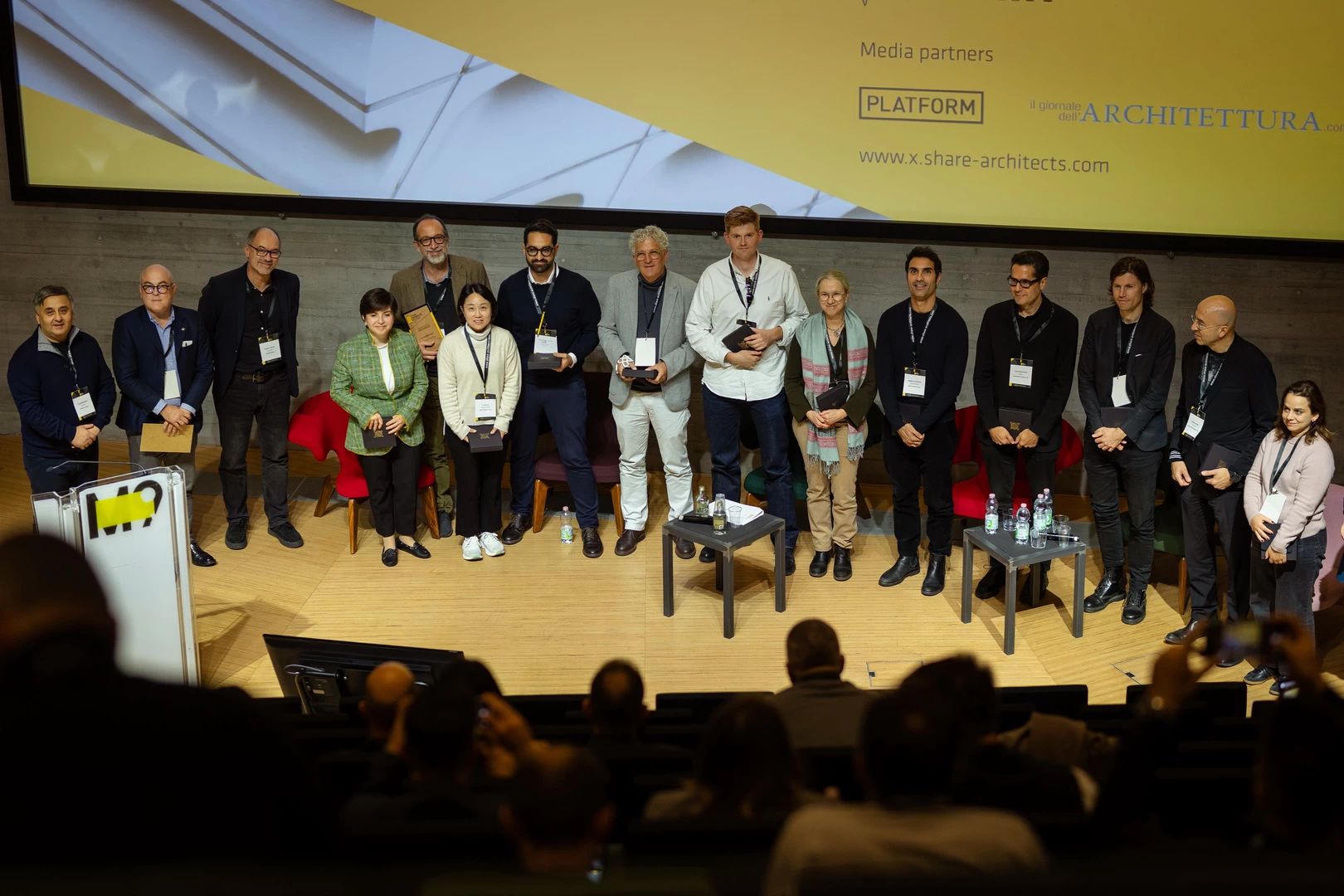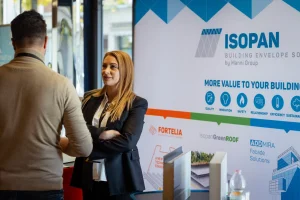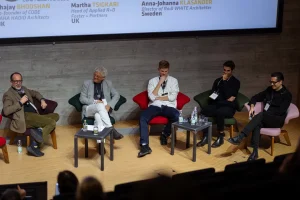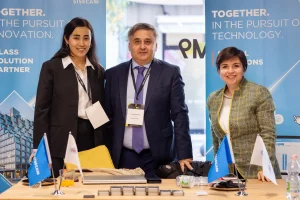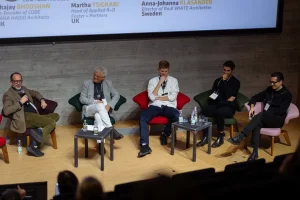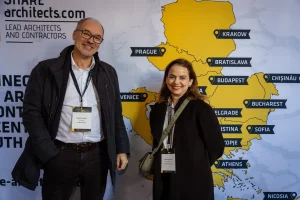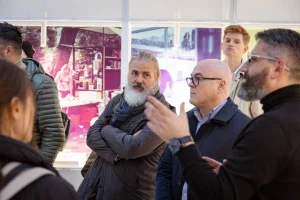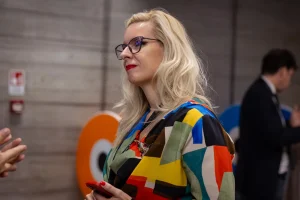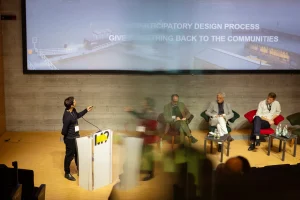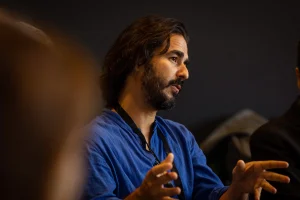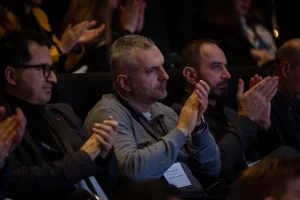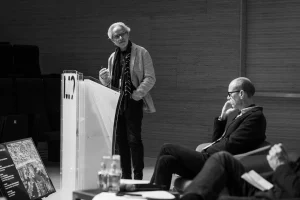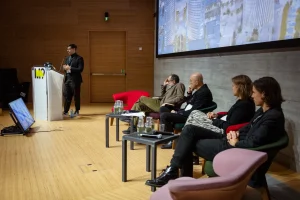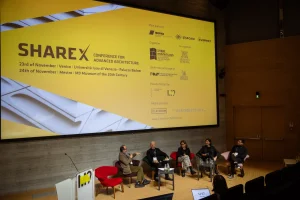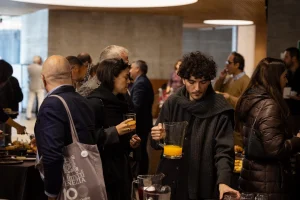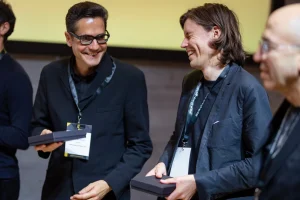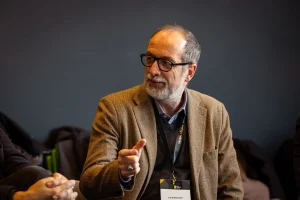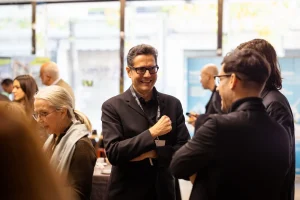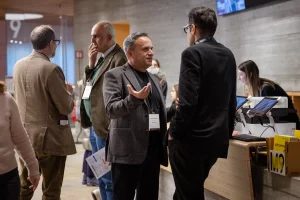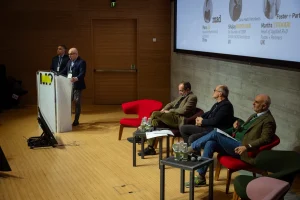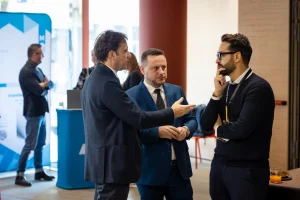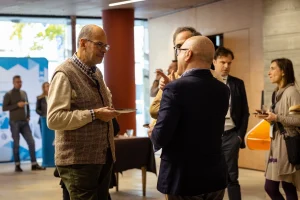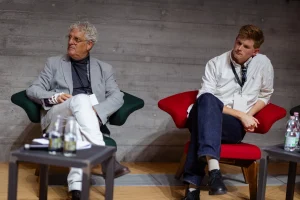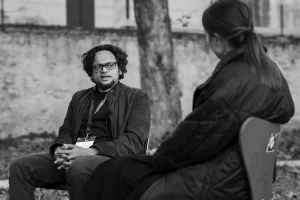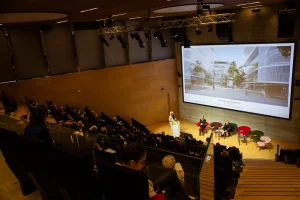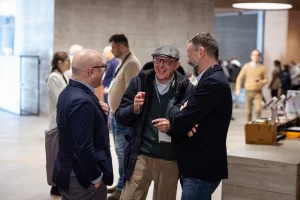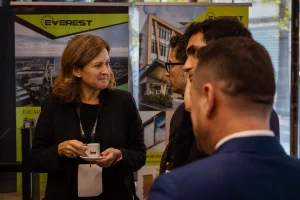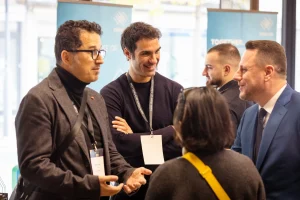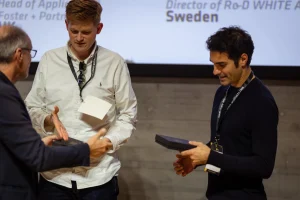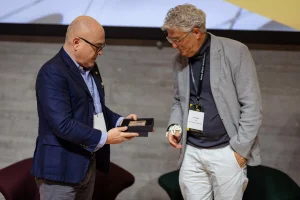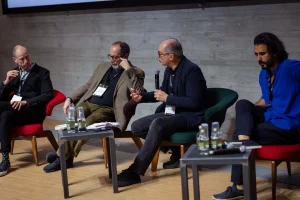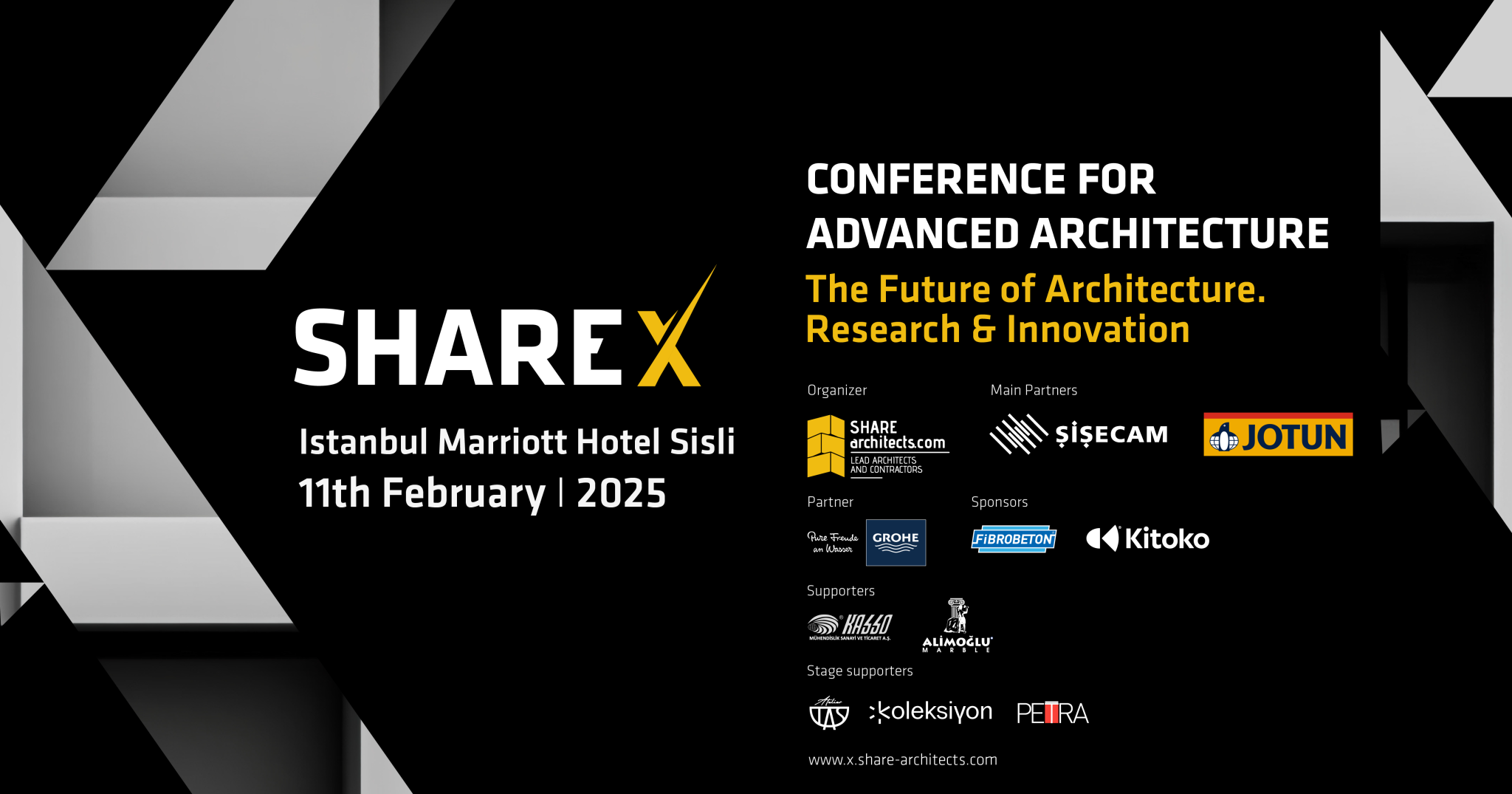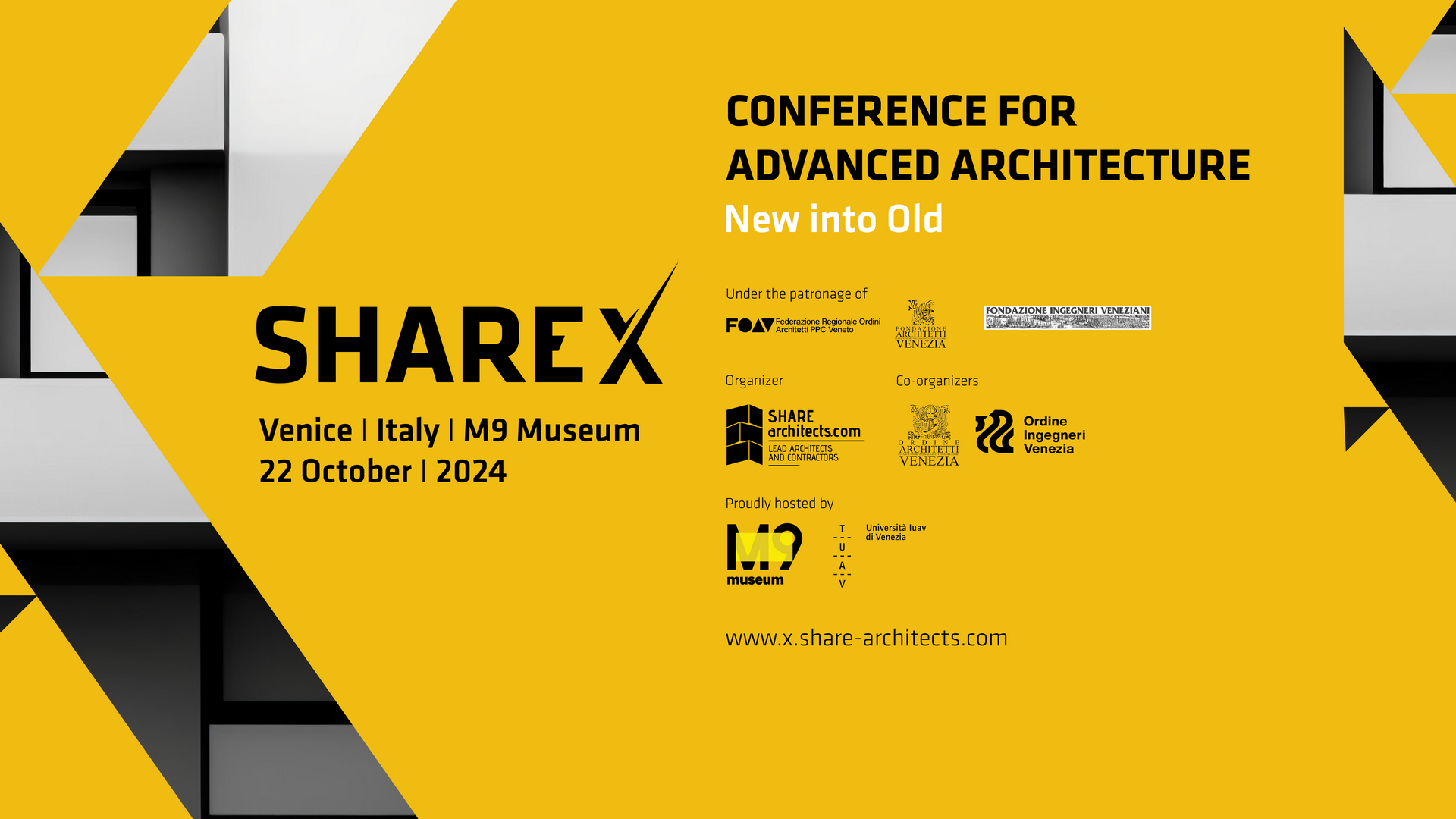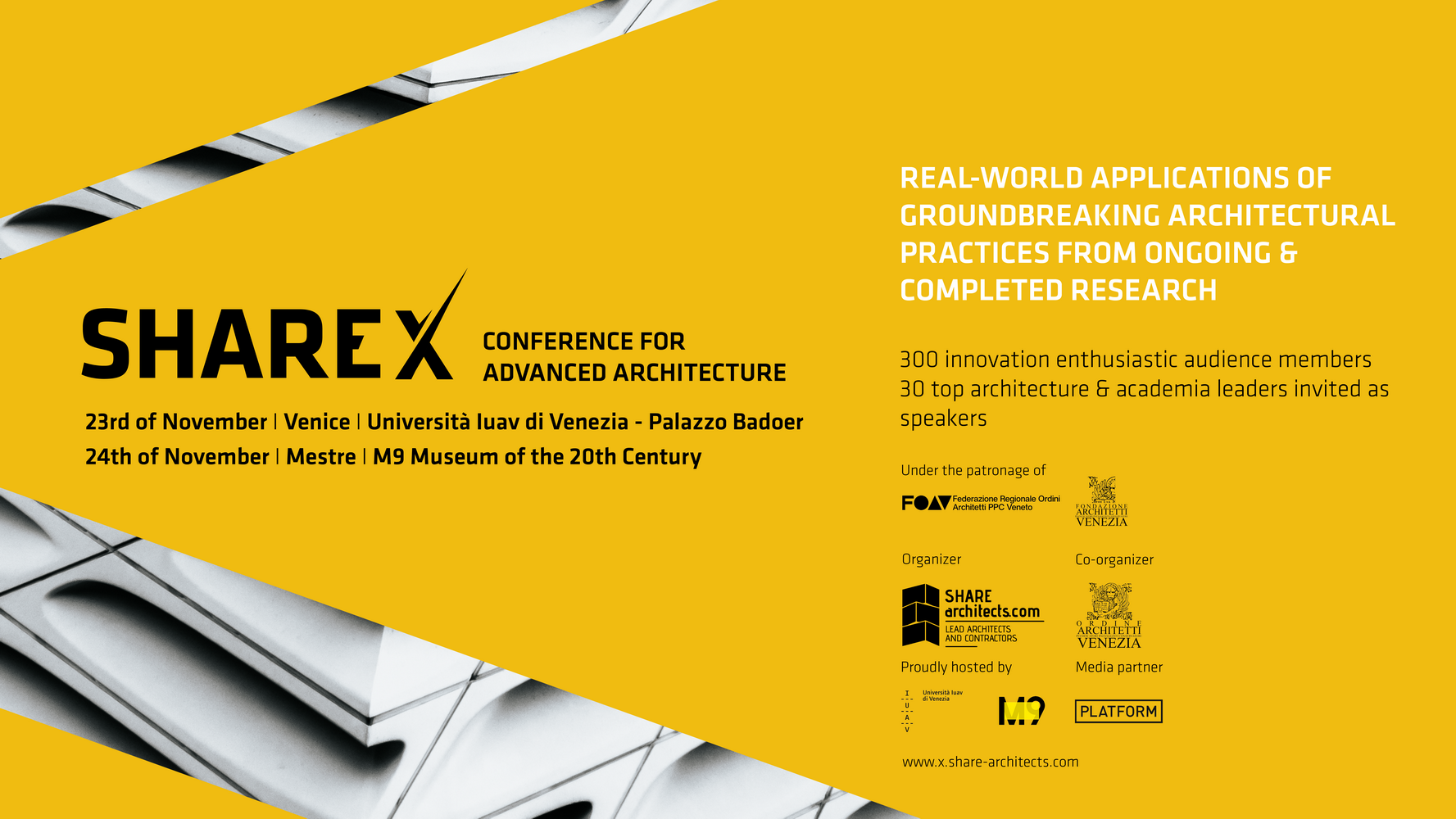The Università Iuav di Venezia at Palazzo Badoer on November 23rd and the M9 Museum in Mestre on 24th were the venues for a two-day event focusing on advanced architecture. This gathering brought together leading research institutions and notable architecture firms such as Zaha Hadid Architects, Foster + Partners, and MAD Architects, among others, with participants from 15 different countries. The SHARE X Conference for Advanced Architecture, organized by SHARE Architects in partnership with the Venice Order of Architects, Planners, Landscapers and Conservators, and under the auspices of the Foundation of Architects, Planners, Landscapers and Conservators of the Province of Venice and the Regional Federation of Architects PPC Veneto, was a highlight of this event. Hosted by Università Iuav di Venezia and M9 Museum of the 20th Century, the event was supported by main partners Șișecam, Isopan, Everest, and media partners PLATFORM, il giornale dell’architettura, and ingenio.
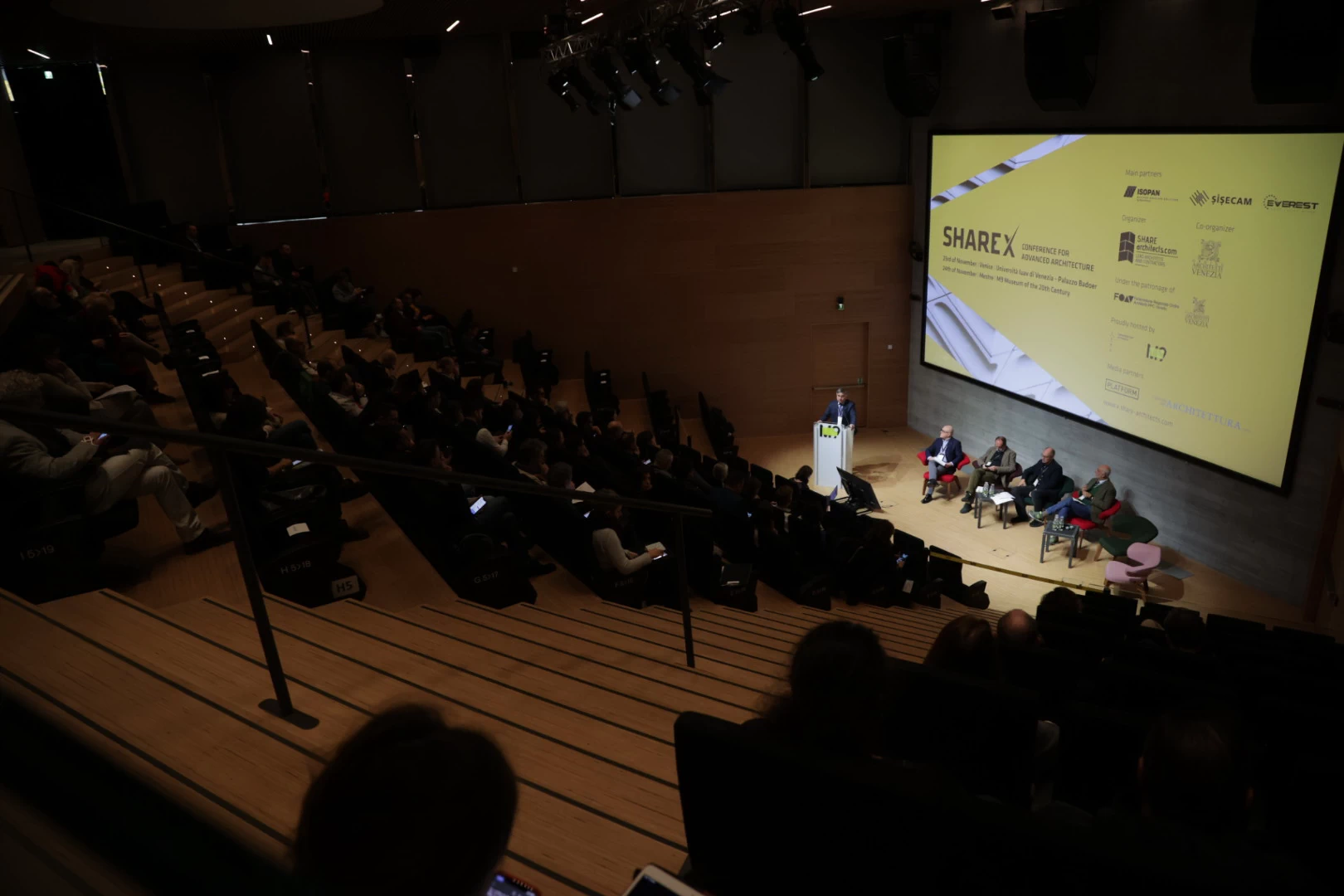
Five Round Tables on Advanced Architecture
Flora Lee, Associate Partner MAD Architects, China, presented the “Architecture within nature. Nature within Architecture” in which the main idea centered on “Architectural design and spatial quality that promote emotional, mental, and spiritual well-being of humans through the connection with nature”. With a vision for the city of the future based on the spiritual and emotional needs of residents, MAD endeavors to create a balance between humanity, the city, and the environment.
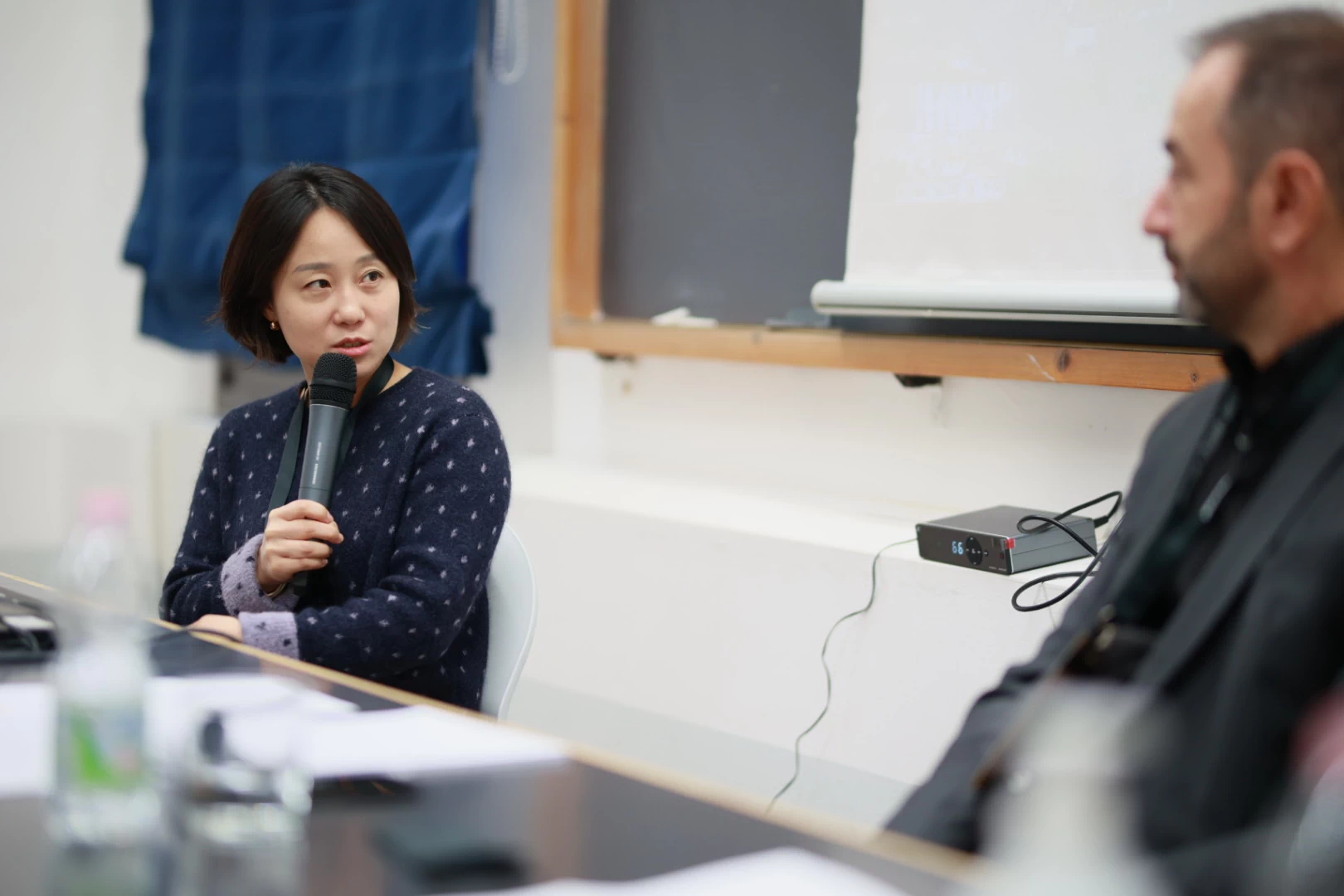
In addition, Anna-Johanna Klasander, Director of R+D WHITE Arkitekter, Sweden, revealed the “Climate and construction – learnings from a 20 storey timber building”, focusing on how sustainability can be a driver for practice-based research and push the transition of the industry by exemplifying Sara Culture Centre, which is a high profile project on a limited municipal budget. The broad set of challenges related to this project includes construction of a tall timber building, responsible sourcing of materials, climate calculations, and multi-disciplinary collaborations.
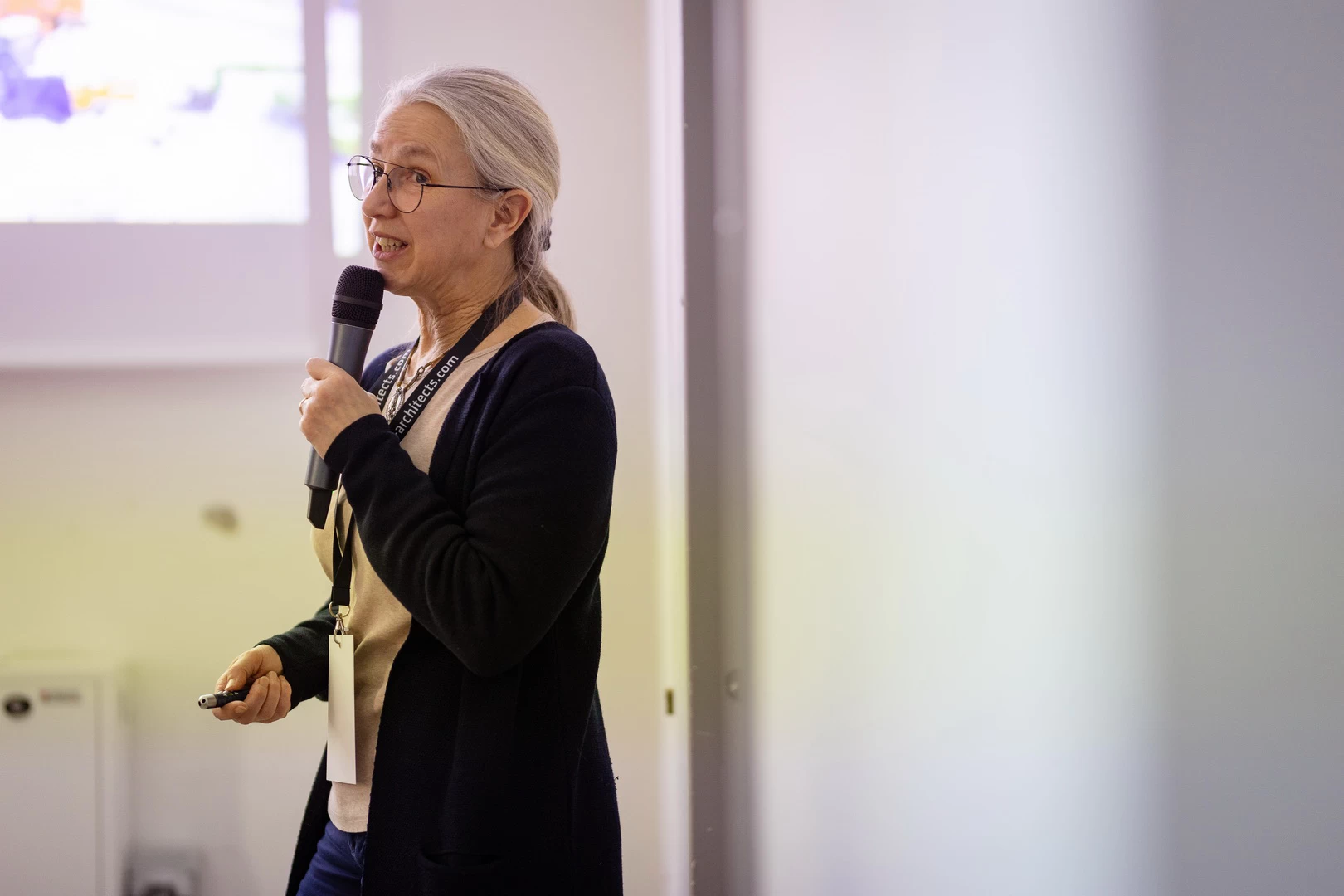
Martha Tsigkari, Head of Applied R+D, Foster + Partners, UK, demonstrated how technology has helped us develop ideas into building through “The White Rabbit – How innovation, disruption and uncertainty can create new possibilities for the AEC indusrty” . The presentation captured the most important aspects of architecture research development such as Complex Geometry, Design to Construction, Performance Driven Design, Optimisation, Distributed Computing, AI and Machine Learning, IoT and Digital Twins, Augmented and Virtual Reality, Interactive Application and Interoperability.
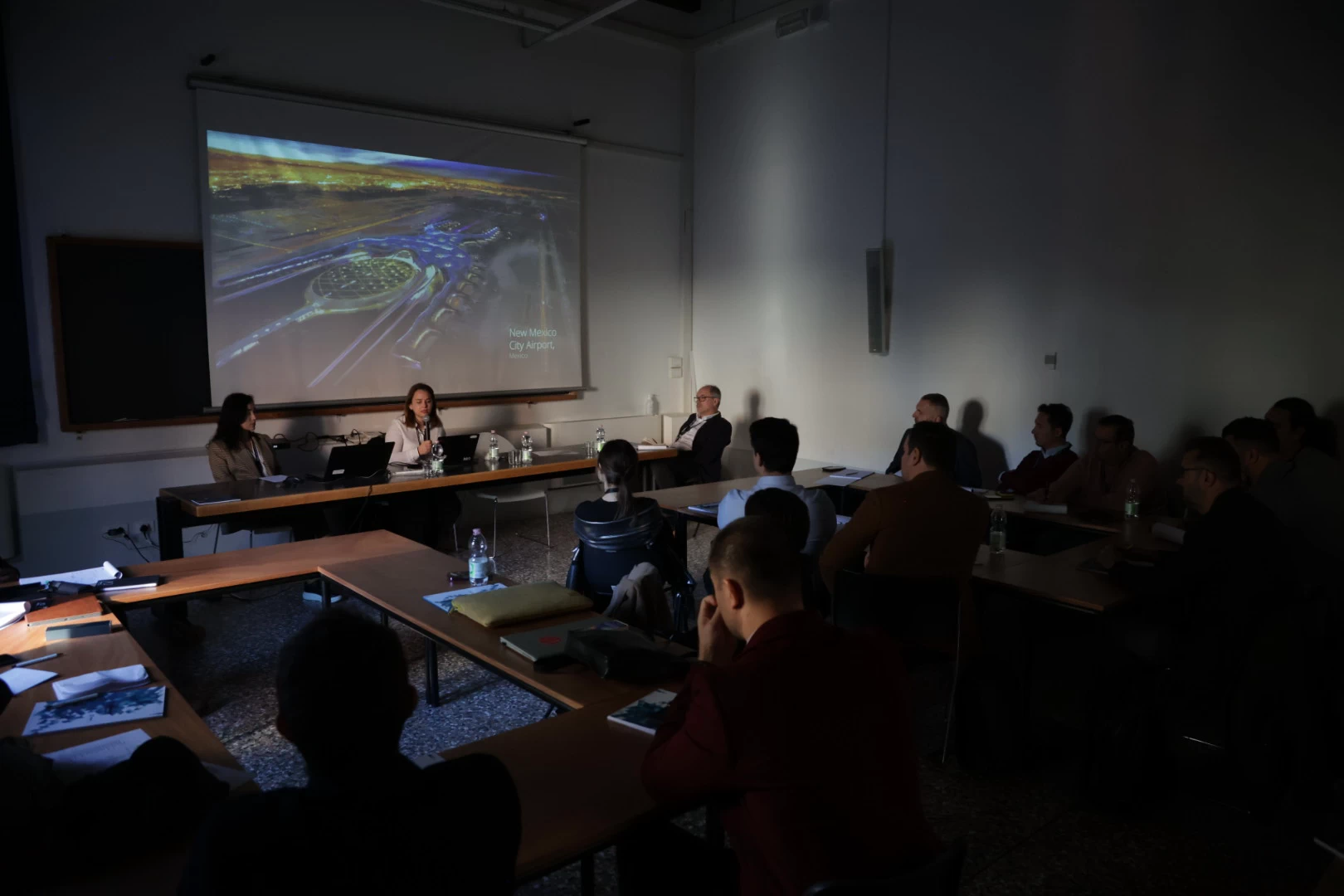
The Head of Computation and Design Research (ZHACODE), Zaha Hadid Architects, UK, Shajay Bhooshan, focused on “High performance geometry for AEC”. The roundtable emphasized several key points: the necessity of a shared geometrical language to enhance collaboration across disciplines in the AEC (Architecture, Engineering, and Construction) sector; the impracticality of using masonry construction with 3D printed concrete ‘stone’ for sustainable and circular construction aims; and the unexpected significance of video game technologies in attracting new professionals and democratizing advancements in digital design and robotic manufacturing
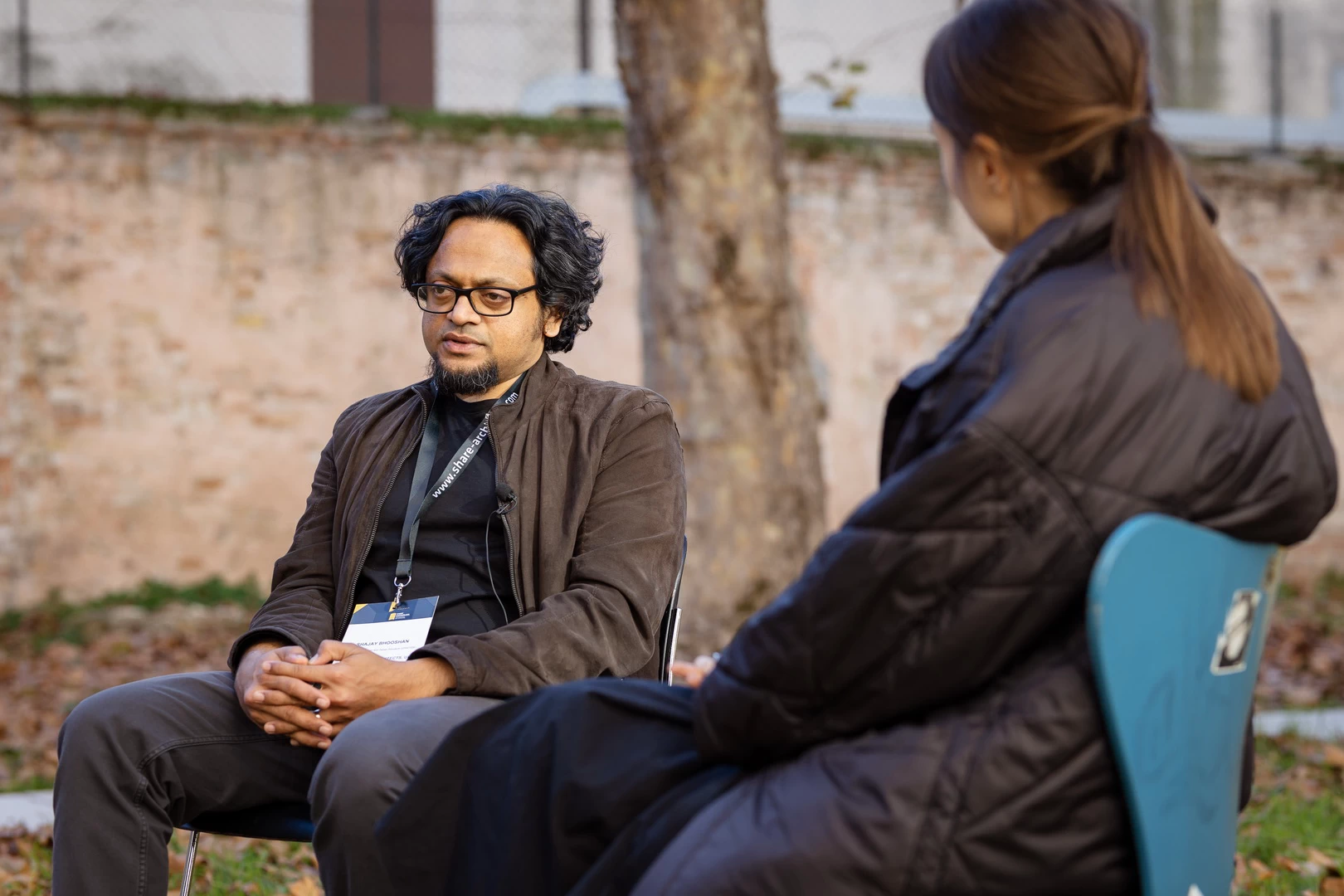
“From Research to Practice” given by Aleksander Guldager Kongshaug, Associate, Circular Design Specialist 3XN/GXN, Denmark, showcased the projects like Circle House, Biomason, Green Solution House, and QQT Tower. It was an insight of how 3XN/GXN bridge theory to real-life structures. Explored the in-house R&D process based on GXN processes, to see how circular and sustainable strategies become implemented in large scaled projects.
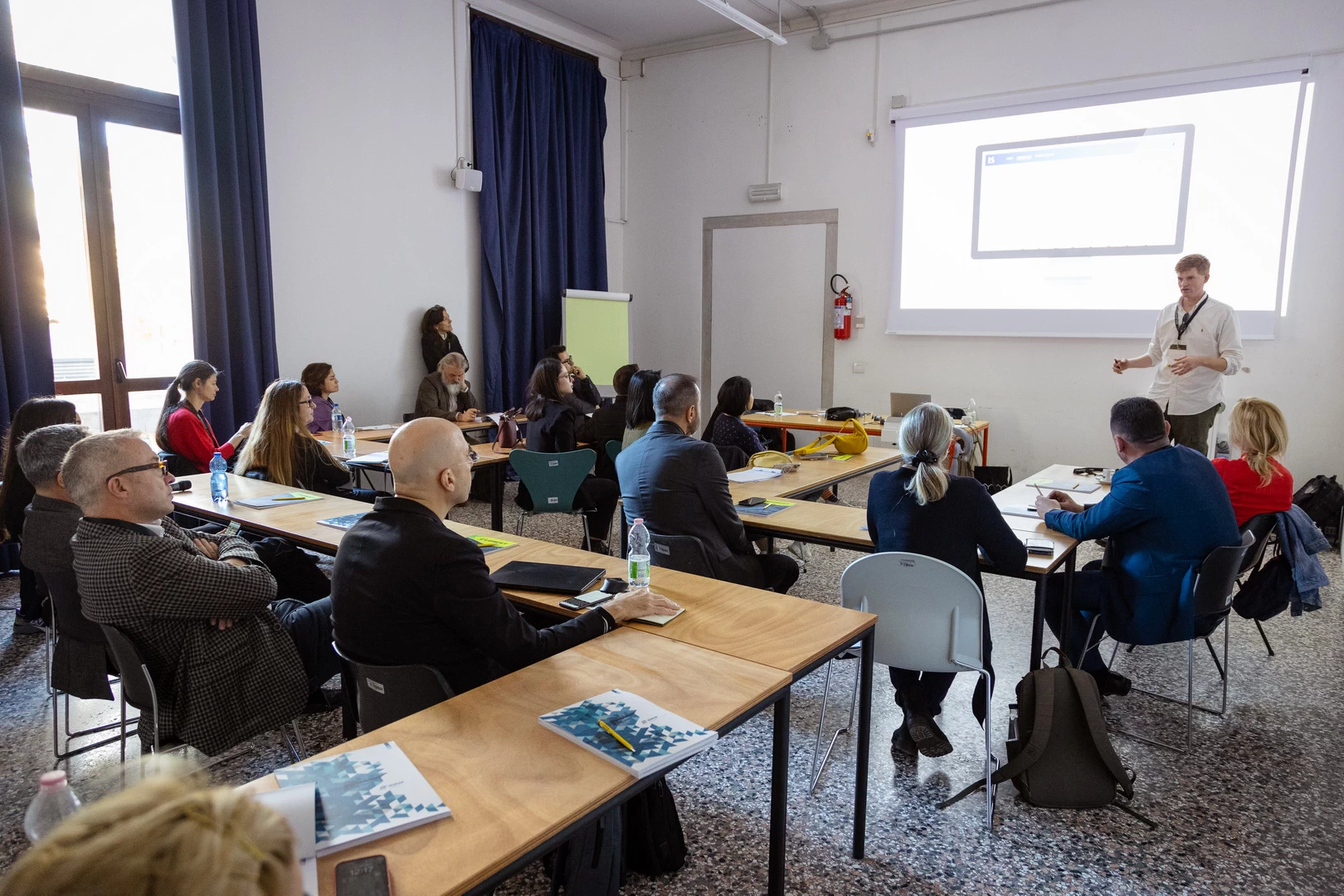
Future Narratives from the Past, special events at the Romanian Pavilion from the Venice Biennale
SHARE Architects together with Romanian Pavilion from the Venice Biennale organized the exhibition of “Future Narratives from the Past”. The meeting was held inside the amazing exhibition that showcased research dedicated to forgotten innovation that can generate and rewrite a new conceptual and creative agenda for the pragmatic future. In the inspiring meeting, the guests discussed how past futures can empower architectural research and innovation practice.
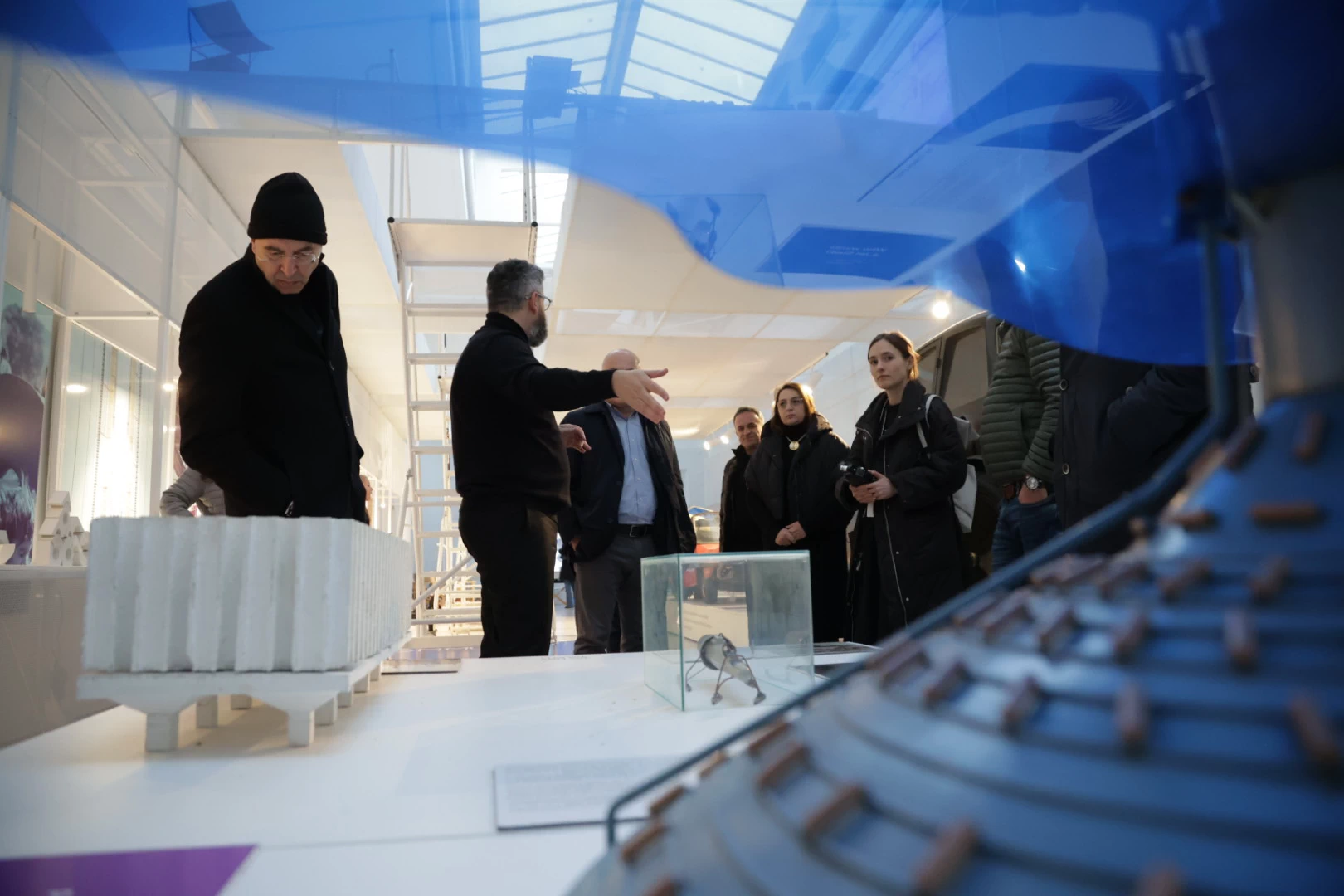
Most anticipated projects of the future Conference
The second day of the conference, which took place on November 24th at the M9 Museum Auditorium, featured presentations from distinguished architects representing prestigious firms. These included Atelier(s) Alfonso Femia, TAMassociati, and Stefano Boeri Architetti from Italy; Amanda Levete Architects, Foster+Partners, and Zaha Hadid Architects from the UK; 3XN/GXN from Denmark; WHITE Arkitekter from Sweden; MAD Architects from China; Kimmel Eshkolot Architects from Israel; and Yazgan Design Architecture from Turkey.
The Conference was officially inaugurated on November 24 by Florin Mindirigiu, Founder of SHARE Architects; Roberto Beraldo, President of the Venice Architect, Planner, Landscaper, and Conservator Order; Angelo Maggi, Advisor for International Relations at Università Iuav di Venezia; Luca Molinari, Chairman of the Conference and Scientific Director of M9 Museum, as well as an Architect, Critic, Curator, and Full Professor at the University of Campania “Luigi Vanvitelli”; and Serban Tiganas, President of SHARE Architects Society
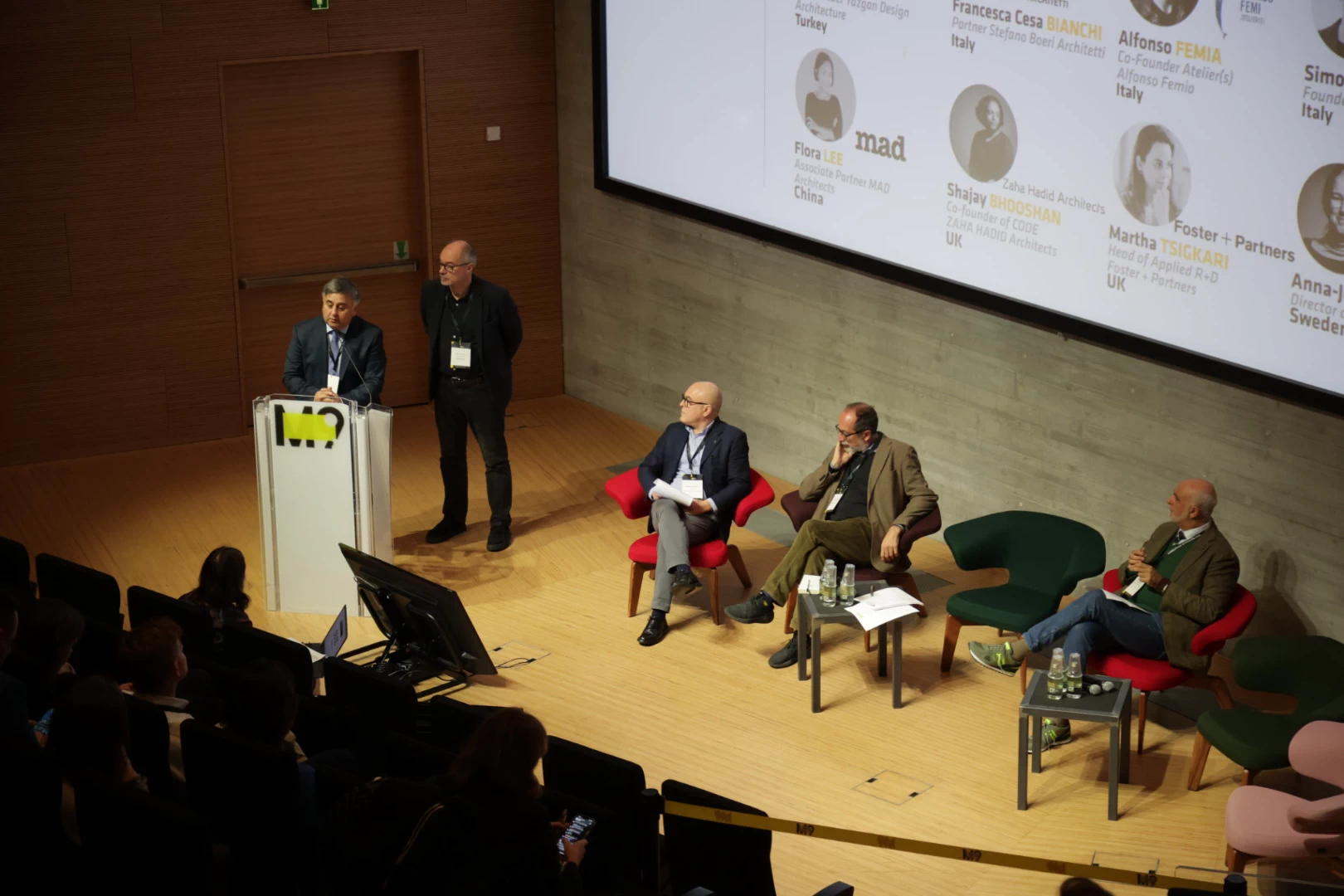
Simone Sfriso, Co-Founder of TAMassociati in Italy, led the discussion on the “Architecture of Coexistence,” reflecting on how recent global occurrences such as the pandemic, wars, and climate crisis have shown the world’s economy to be at its most vulnerable in recent times. He emphasized that those already on the margins or living in precarious conditions are now facing an even greater risk of being completely overlooked. He argued that architecture with a societal focus can help reduce marginalization and exclusion, serving as a catalyst for new ideas. Sfriso highlighted architecture as a potent tool for communication and a means for various groups to assert their rights, progress, opportunities, and inclusion.
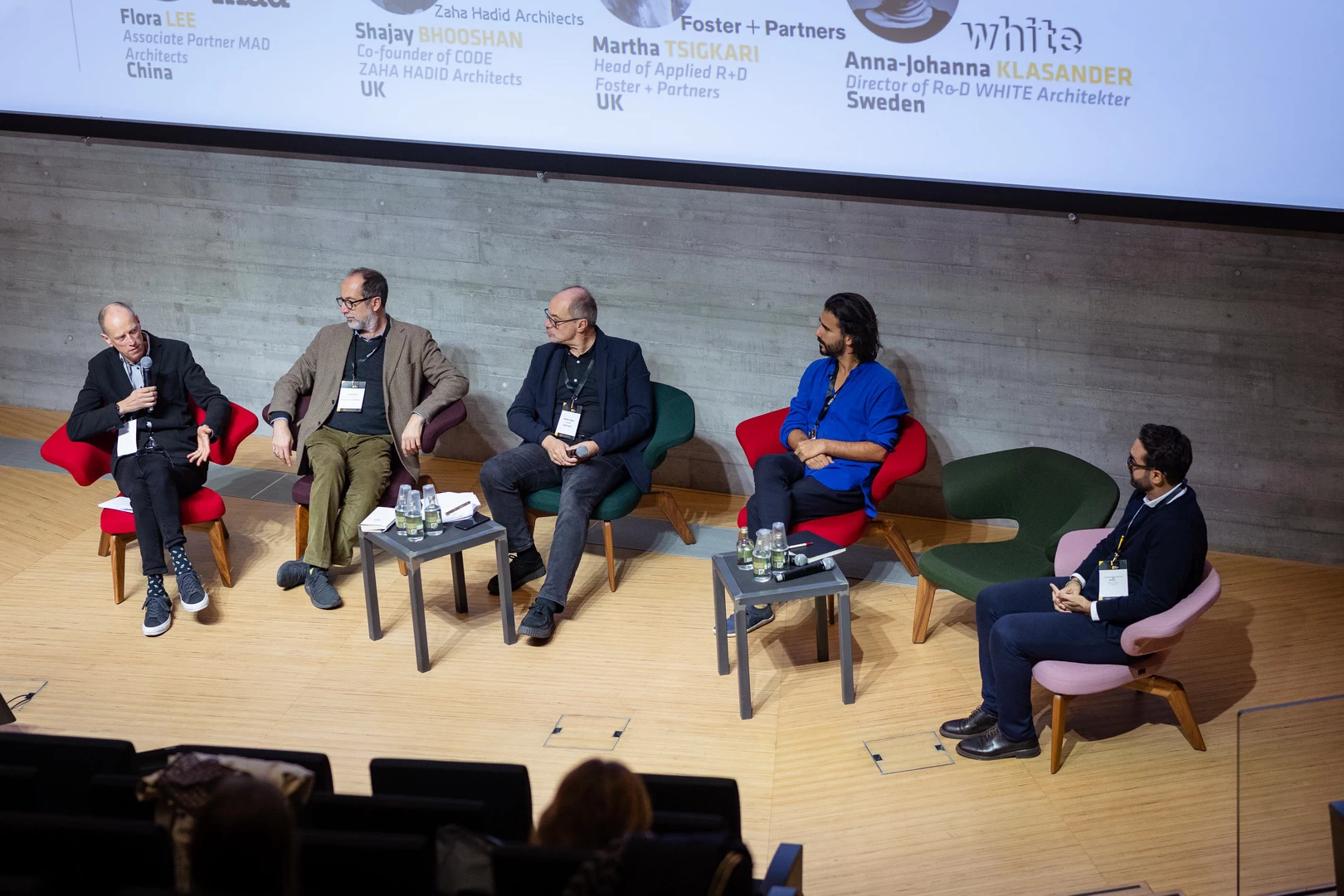
Francesca Cesa Bianchi, Partner at Stefano Boeri Architetti in Italy, introduced us to the Trudo Vertical Forest, an embodiment of Stefano Boeri Architetti’s vision for a new architecture promoting biodiversity. This project marks the first application of the Vertical Forest model to social housing. Primarily targeting low-income demographics such as young professionals and students, the tower in Eindhoven offers affordable yet high-quality living spaces. Through this project, the concept of a harmonious coexistence between humans and other species is expanded to address two simultaneous challenges: the critical environmental crisis and the pressing need for affordable housing in modern cities.
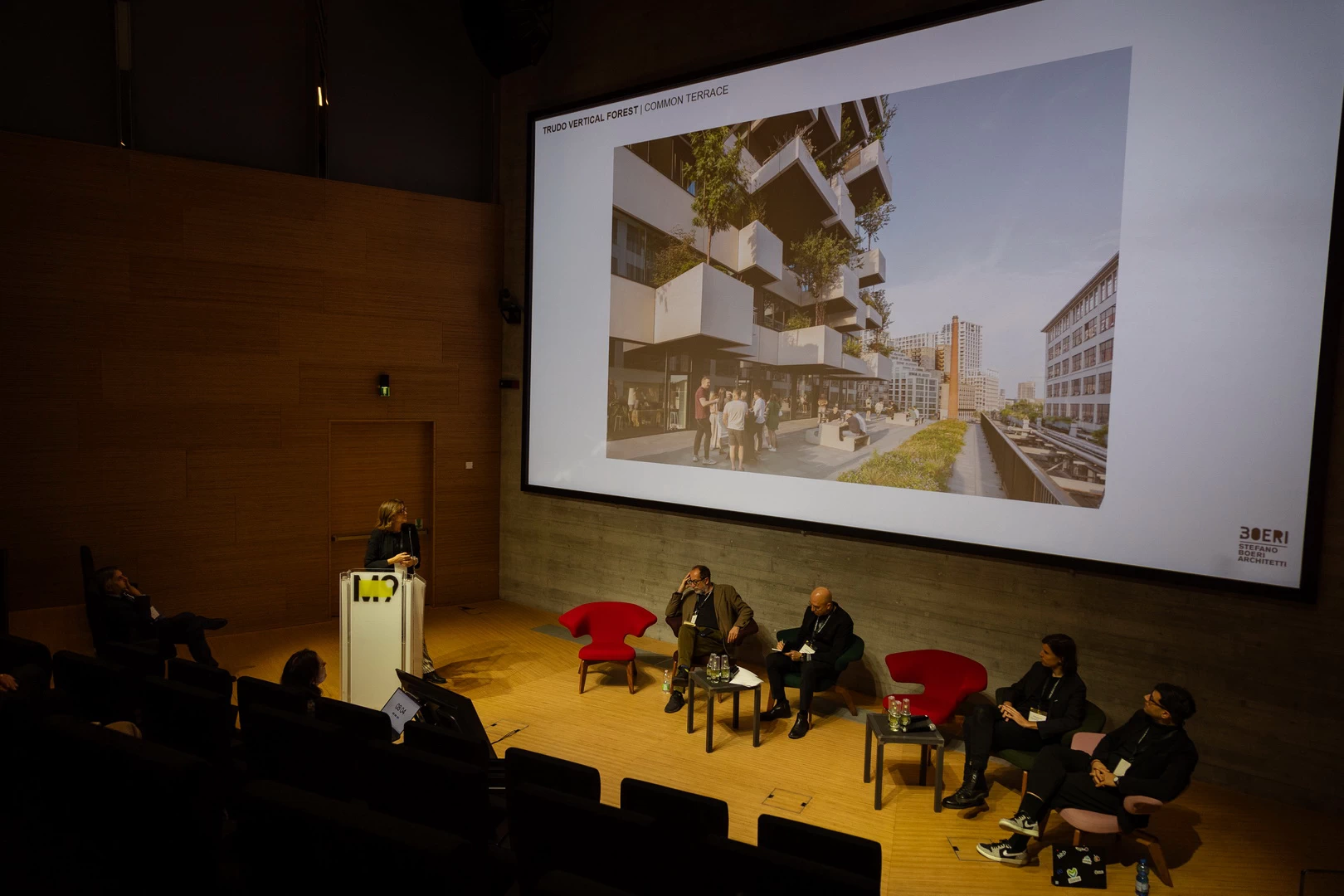
Alfonso Femia, Co-founder Atelier(s) Alfonso Femia, Italy shared the project of the Justice Park in Bari titled“Architecture and Generosity”. “In times of radical change, we need to be radical. In its development as parts and as a whole, the city must be consistent with its time and synchronized with contemporary transformations. Administrators and architects are asked to make courageous choices toward radical transformation, breaking free from the inertia of rhetorical thinking and individual performance.
These are the actions that reveal responsibility and design generosity.
In the Bari Justice Park project we have declined generosity, not just as a mere matter of space and quality of the built environment, but through a design that expresses intense participation in people’s lives, making good living the goal but, more importantly, the normality of design.” – AF
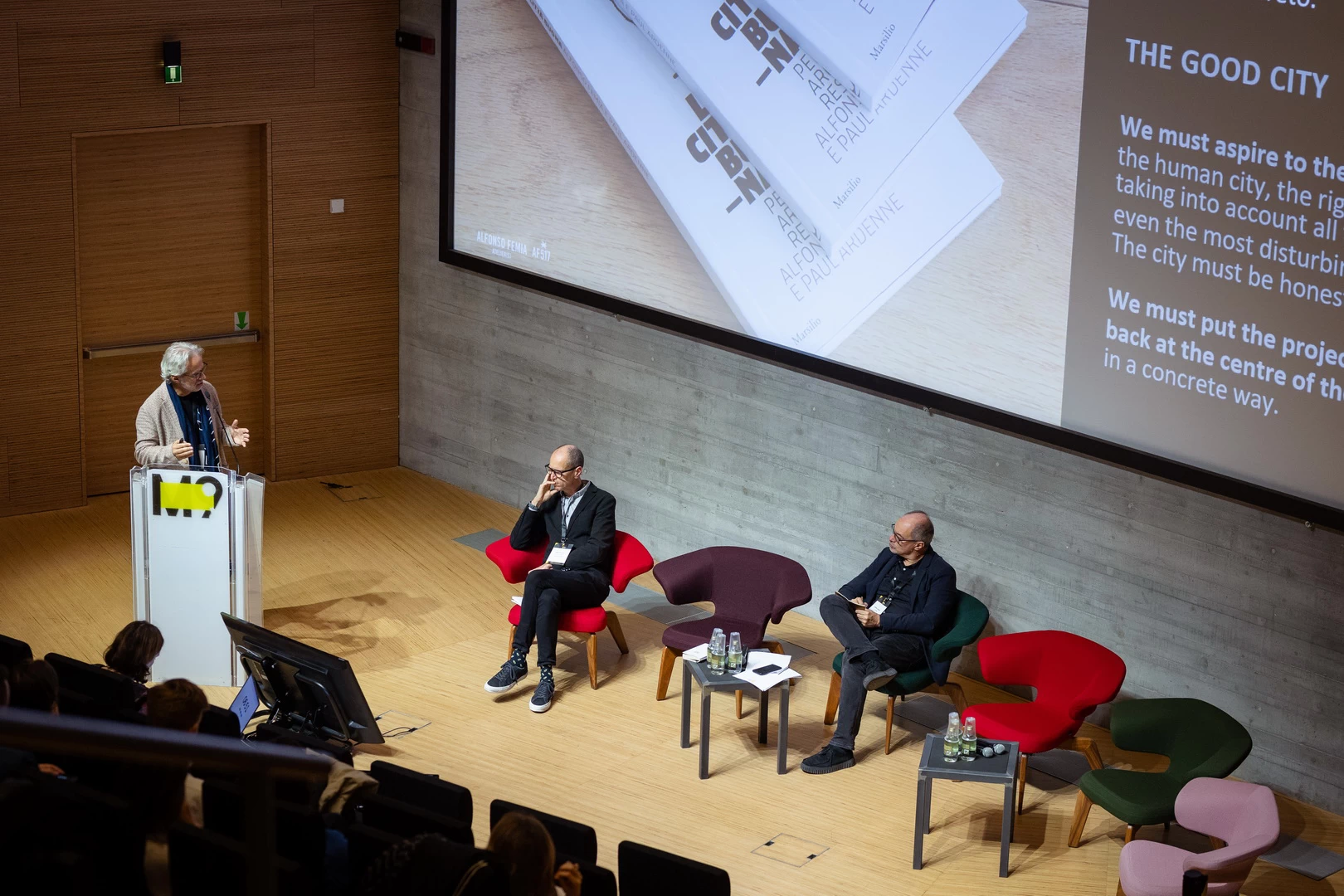
Maximiliano Arrocet, Director at AL_A in the UK, delivered a presentation titled “A Story in Ceramics,” in which he recounted AL_A’s explorative journey with ceramics, spanning from the Victoria and Albert Museum to the Belgrade Philharmonic. This narrative showcases a deep engagement with the material, highlighting its ability to create a dialogue between history and location, and to reflect Belgrade’s forward-thinking spirit. Arrocet discussed how ceramics serve as a versatile medium that captures the essence of the Danube River, blending ecological awareness with cultural depth. The Belgrade Philharmonic, in his portrayal, stands as a symbol of cultural integration, resonating with the city’s pulse and reflecting its ambition for an urban environment that coexists in harmony with its natural surroundings.
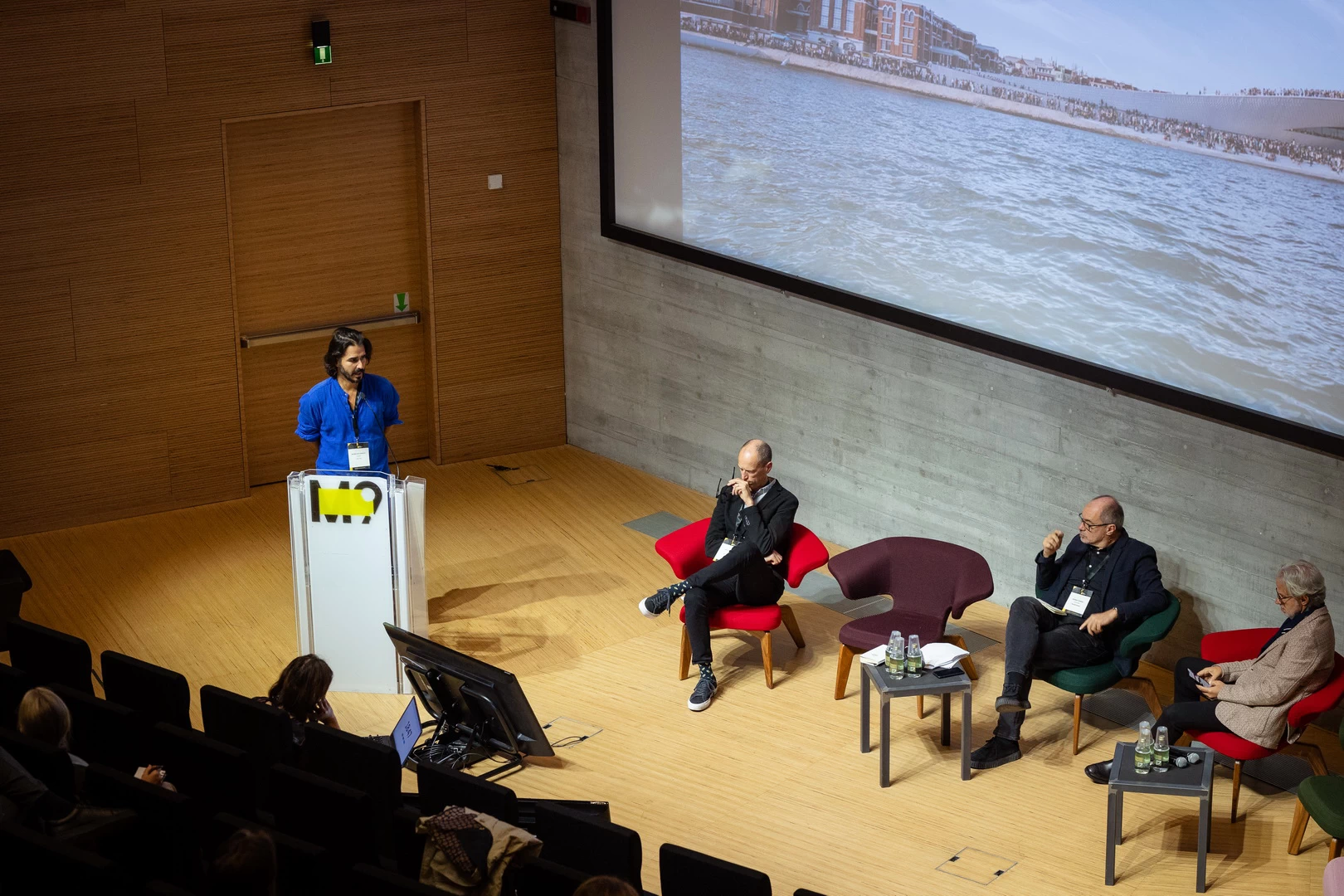
Kerem Yazgan, Co-Founder Yazgan Design Architecture, Turkey, focused “From the Effect of Shadows to the Knowledge of Shadows” with the integration of nature to the architecture is the main idea in the projects, METU Coworking & Cafeteria and HAB OIZ Office, in which inner gardens are designed instead of walls. FlexibleSystem Design is one of Yazgan’s research areas in which we design the relations between the elements of a project.
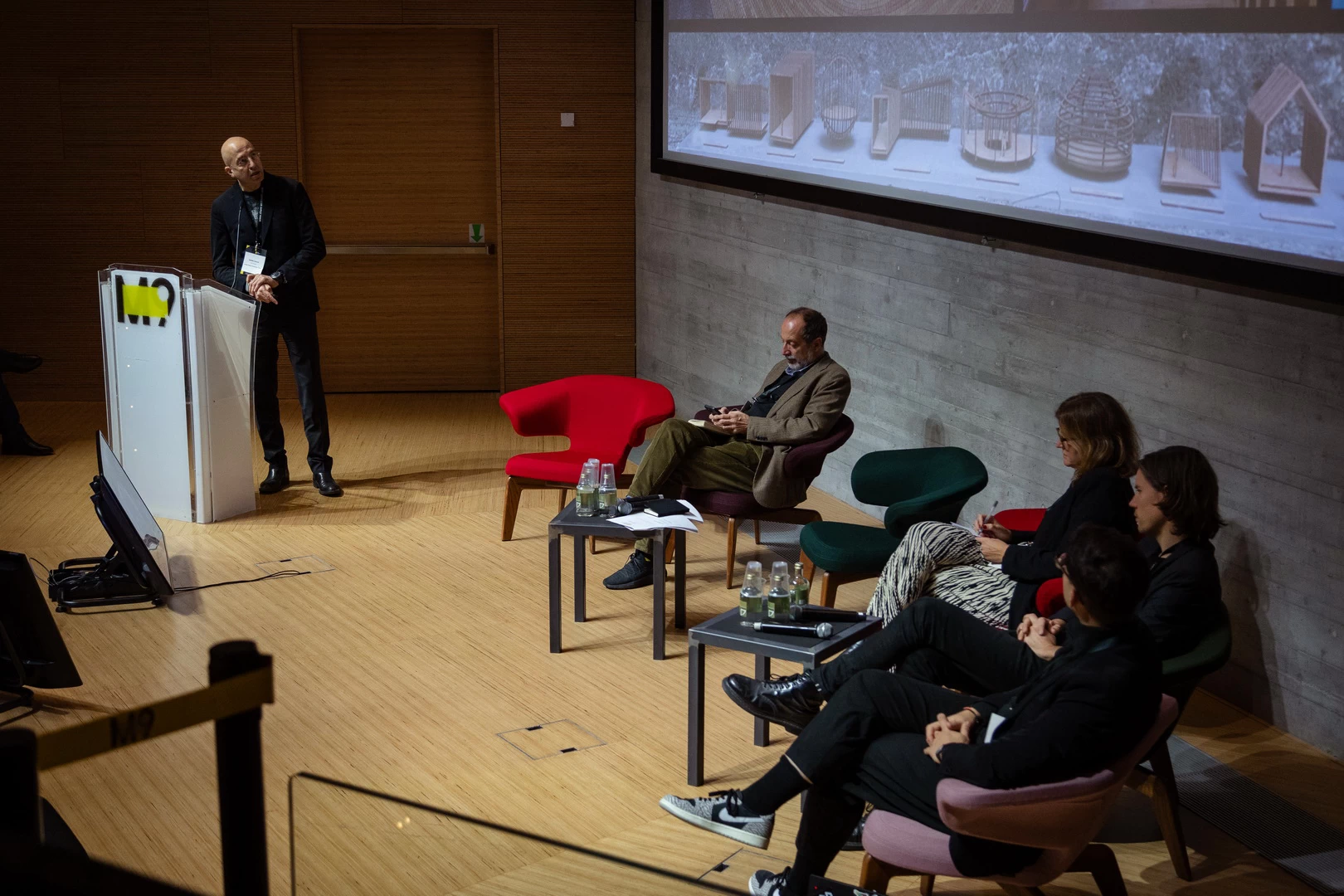
Oskar Noerlius, Partner WHITE ARKITEKTER, Sweden, presented “Sara Culture Centre – New possibilities for mass timber”. In his talk, Oskar focused on the key findings from the design and realization of the world’s first 20 storey tower in mass timber. With a mixed use programme including 6 theater stages, two exhibition spaces, a public library and a 200 room hotel with 3 restaurants, spa, and conference center, the building is a library of innovative solutions in mass timber while being a social hub in the city and a symbol of the green transition in northern Sweden. Sara Kulturhus covers 28.000 sqm and was inaugurated in 2021.
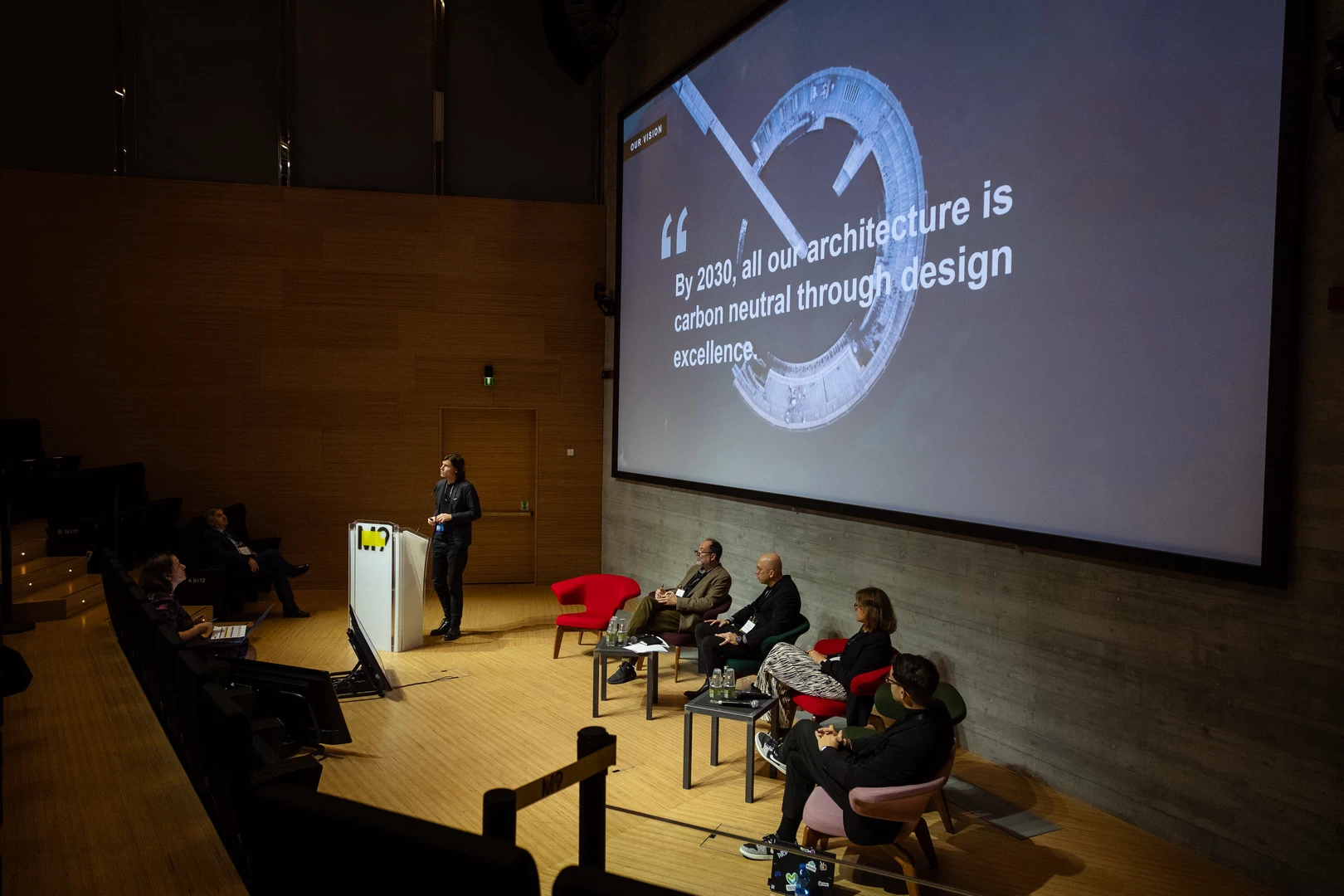
Marios Tsiliakos, Partner in Applied R+D at Foster+Partners in the UK, presented a case study titled “Lusail Towers – Streamlining Design Collaboration through Technology.” He illustrated how Lusail Towers serves as an exemplary model of how technology can enhance and streamline the design process. The project demonstrates the effective integration of parametric modeling, performance-driven data, and analytical metrics into the design iterations, all accomplished within a remarkably accelerated time frame.
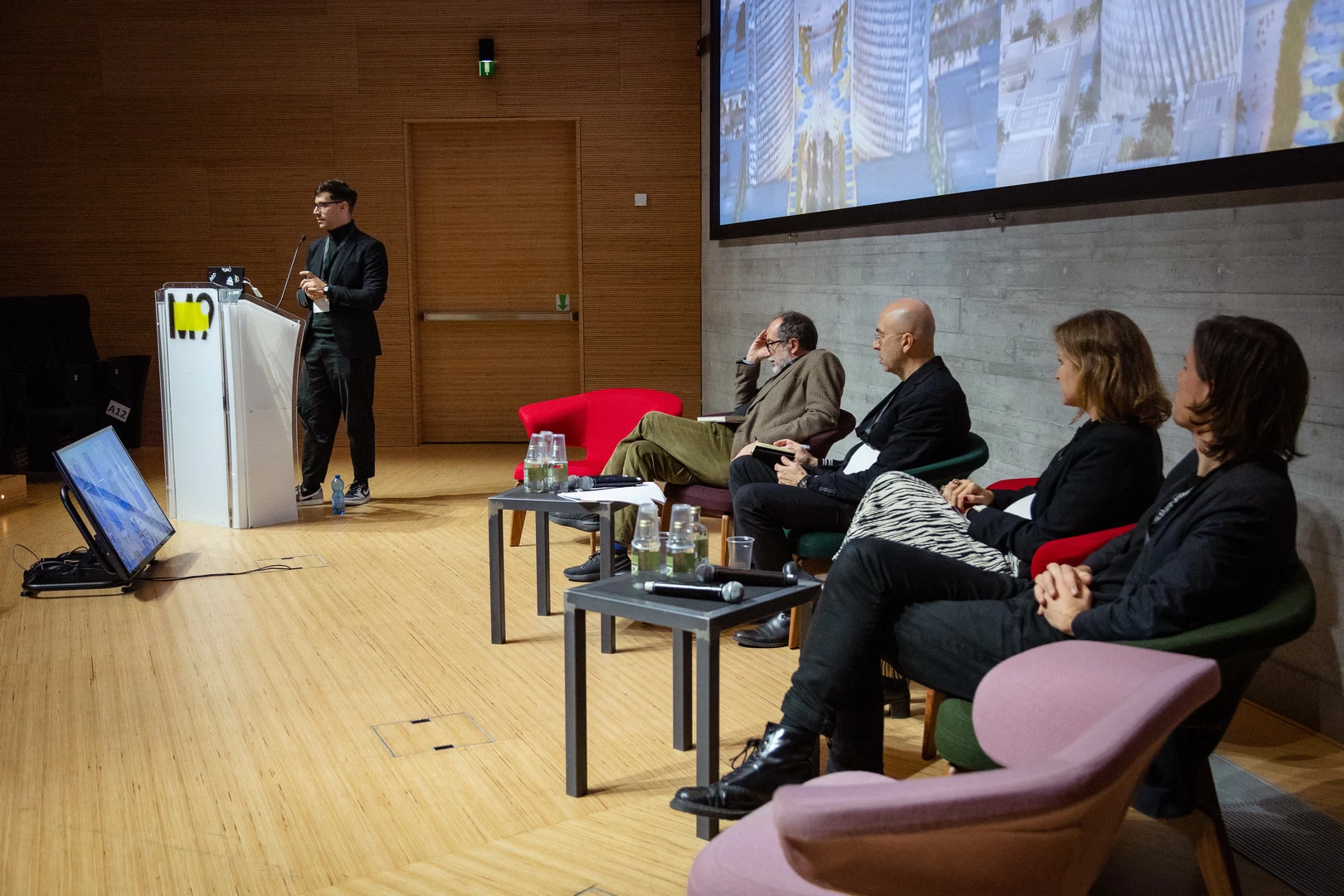
Etan Kimmel, Co-Founder Kimmel Eshkolot Architects, Israel, given a lecture about “Technology as an innovative generator of architecture” where was presented the case study of Mount Herz International Memorial Hall and The Checkpoint building for computer science in TAU. The memorial is generated by parametric design, creating a unique space that is impossible to be built with known building methods.The “light bell” on top of the hall was optimized to be built from 9000 identical bricks that each is made singular by CNC to strictly connect with ultra high precision to the others.

Aleksander Guldager Kongshaug, Associate, Circular Design Specialist 3XN/GXN, Denmark, focused on “Transformation, The New Baseline” Quay Quarter Tower. The 206-meter, 49 story Quay Quarter Tower (QQT) is a once-in-a-generation project. Located on the edge of Sydney’s bustling Circular Quay, the tower “upcycles” the existing AMP Centre tower. Built only in 1976, the original AMP Centre was reaching the end of its usable lifespan, but rather than simply tear it down and start over, the project team set out to reach an ambitious goal: to reuse as much of the existing building and set a lofty new standard for what is possible for adaptive reuse in architecture. Today, that goal has been achieved. QQT retains over 65% of the original structure (beams, columns, and slabs) and 95% of the original core, resulting in an embodied carbon saving of 12,000 tonnes (the equivalent of 35,000 flights between Sydney and Melbourne).

Andrea D’Antrassi, Associate Partner MAD Architects, China, presented the “MAD Architects MAD Works” topic, including Boncompagni, Rome, Fenix Museum in Rotterdam and Milan Statale Installation. In his talk, he focused on the Rome regeneration project of a 20000 sqm new facade in the historical center of Rome. Fenix museum in Rotterdam with a monumental staircase that redesignates the skyline of the city. How to create new emotions with a huge cube covered with ETFE.
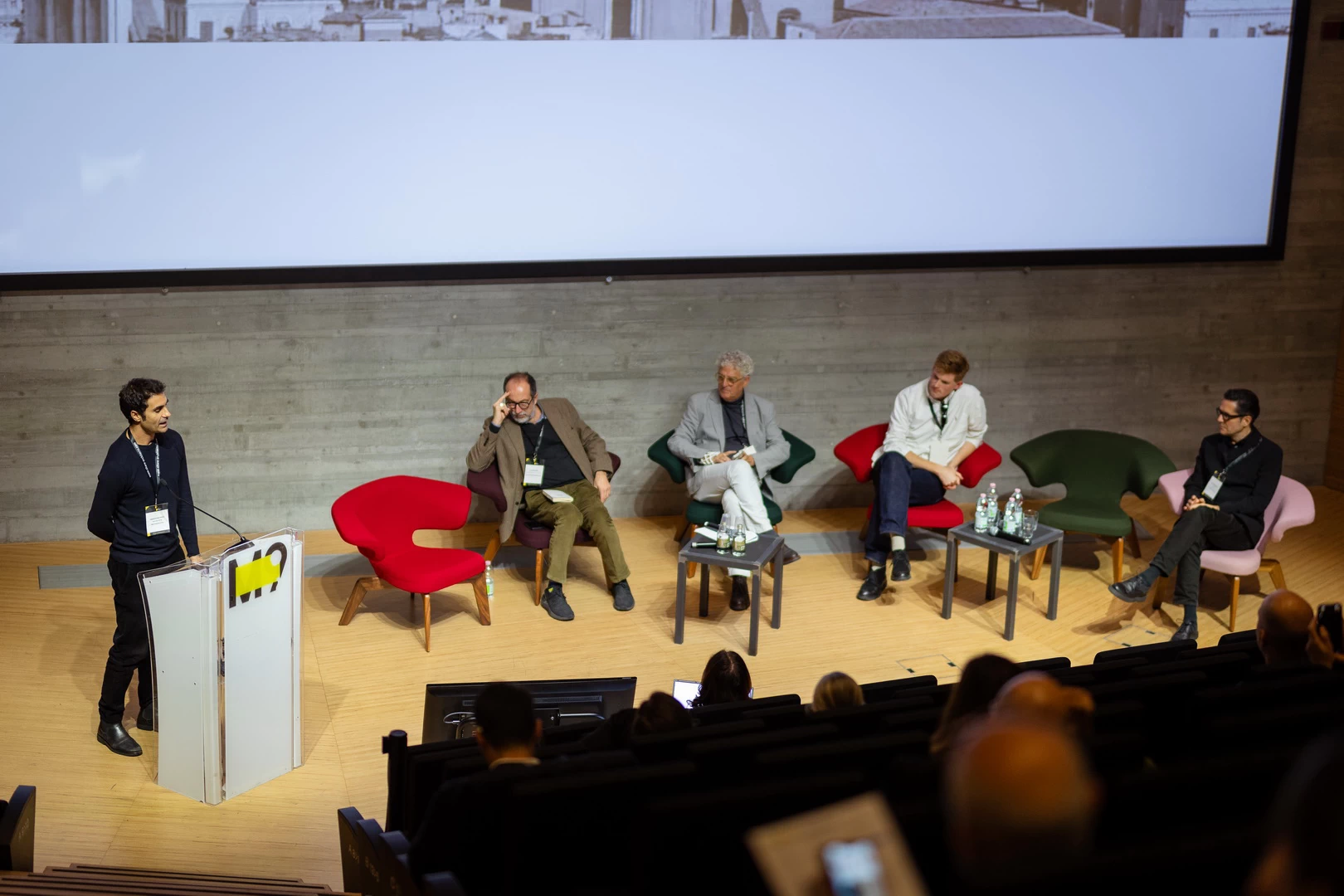
Paolo Matteuzzi, Director at Zaha Hadid Architects, UK, presented a lecture titled “ZHA Off Site technologies: an excursus through Parametricism.” highlighting exemplary projects such as The Morpheus Hotel in Macau and The Seamless Footbridge in Hangzhou showcasing innovative approaches for tall and expansive structures. Morpheus Hotel, Macau, China The Morpheus is the world’s first free-form high-rise exoskeleton. About 150,000 m2, distributed on 42 floors and a height of about 160 mt. It hosts Approximately 780 guestrooms, suites and sky villas Meeting and event facilities, casino, lobby atrium, restaurants, spa and sky pool. Hangzhou China The footbridge is a three tide arches system with a single suspended deck for a total span of about 500 m. The landmark footbridge, through its sinuous decking, connects the 2 opposite sides of the Grand Canal in Hangzhou, while offering several viewings toward both the Qiantang River and the Grand Canal. The Foot Bridge side decking, departing from each embankment, merge in a wider central observation area, a Floating Plaza, for visitors gathering, the extremes of the decking towards north and south become linear sightseeing platforms
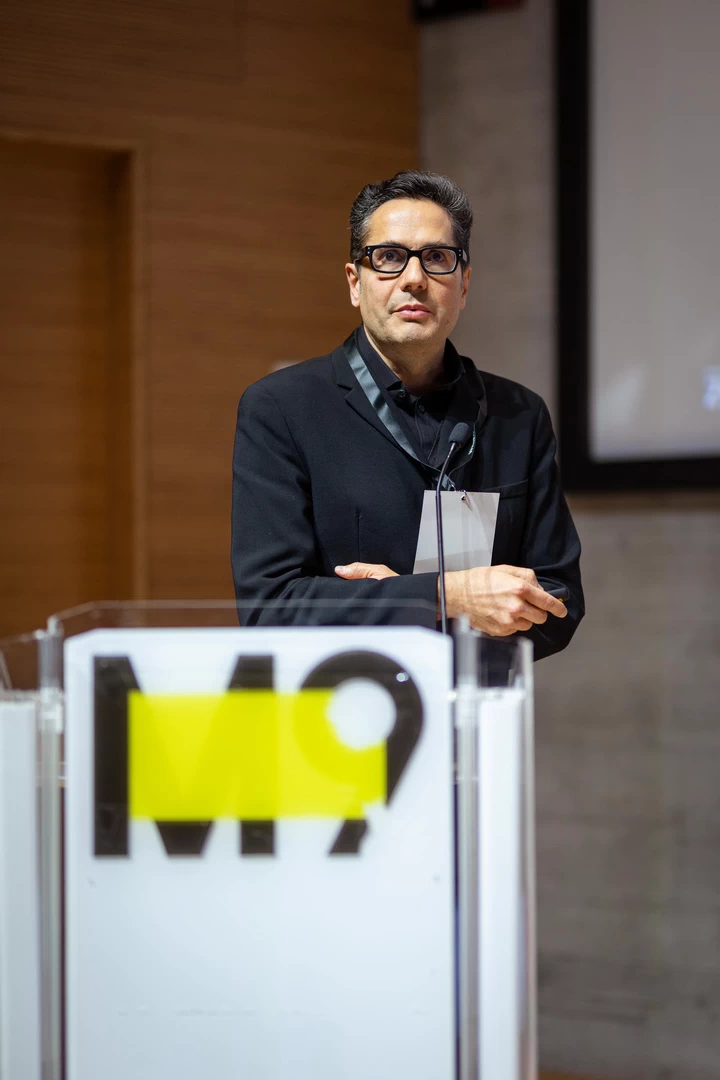
Gizem Güngör Erkılıç has brought to our attention the properties of Sisecam glass and how you can enhance your building design by choosing the right glass. She also showed us how to choose the right type of glass for the construction and its use.
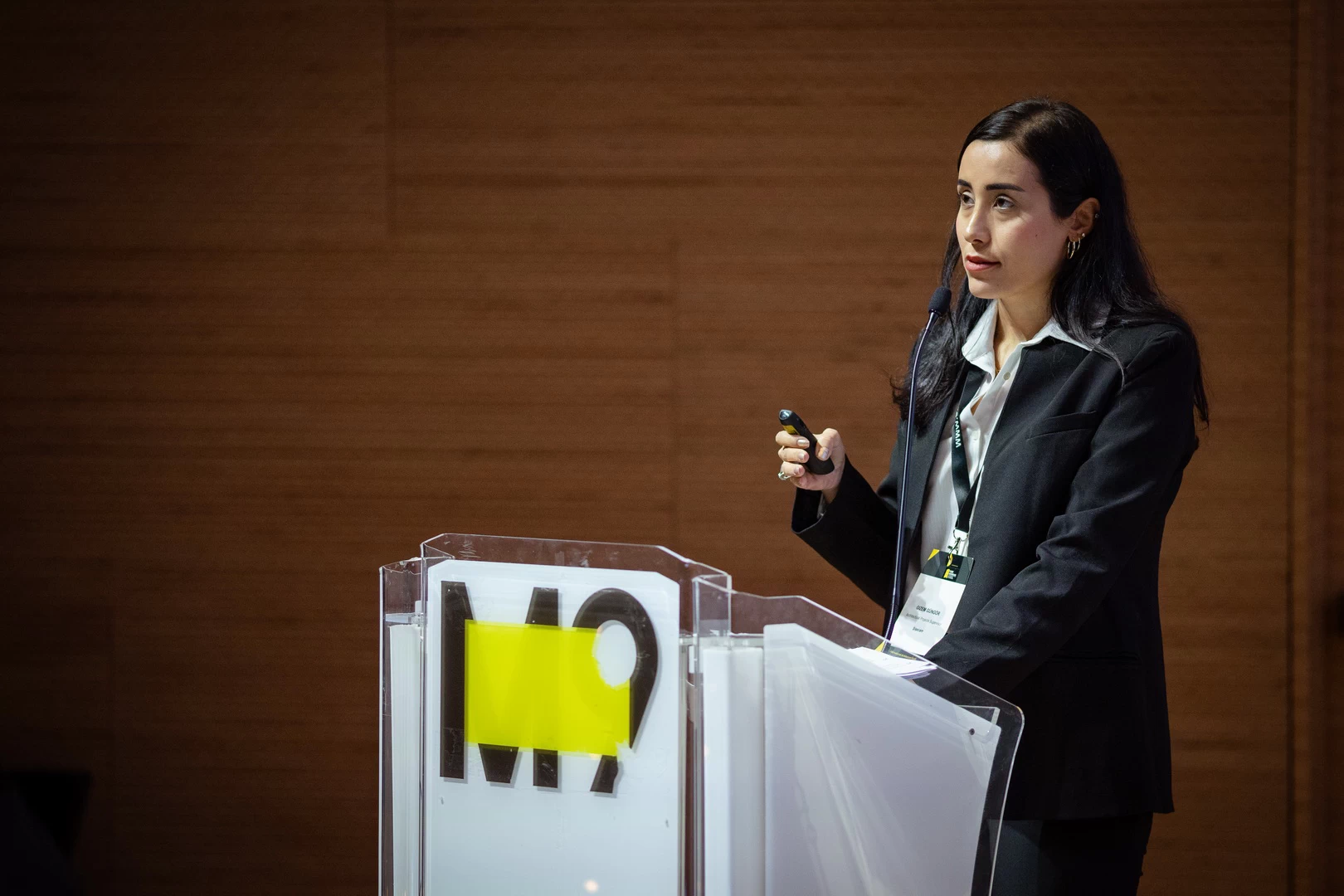
Everest Automotive Industry was represented by Albert Valteri, Chief Executive Officer, who highlighted “Improving your comfort with smart solutions”. In his speech, Albert revealed different sustainable types of material suitable for constructions made of aluminum.

Alexandru Ciucă, Technical Director Isopan Est, provided the Prêt-à-porter façade with different sustainable systems, special panels with compatible models (normal, symmetrical, jolly, and angle), and finishing patterns with implementation overview such as vision, cross, and wid.
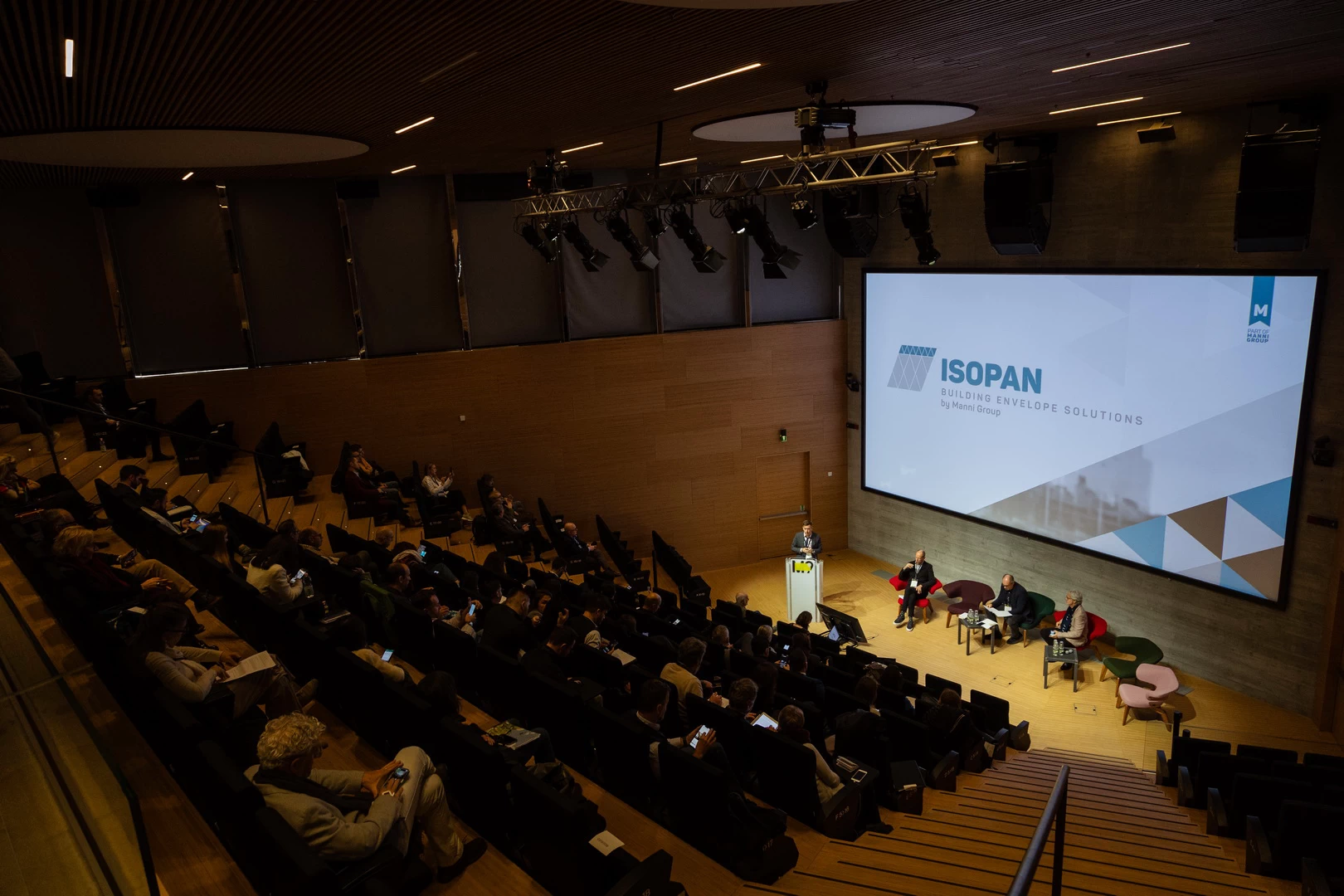
About SHARE Architects
SHARE Architects’ mission is centered on promoting communication, sharing, and exchanging values, knowledge and best practices in architecture.
Over the past 26 years, the SHARE Architects’ Forums have become an important networking platform for architects and contractors in Central and South-Eastern Europe. SHARE provides a useful framework for knowledge and understanding of the diversity of modern architectural phenomena. SHARE Architects events are presently taking place in 16 countries and have developed a community of over 50,000 professionals.share-architects.com/
